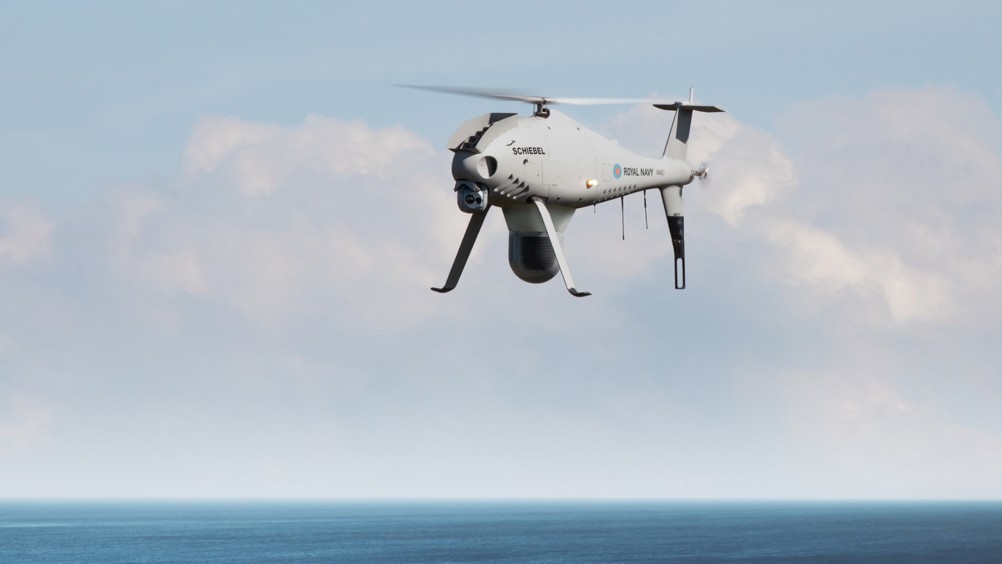Peregrine UAS set for Royal Navy deployment
A new unmanned rotary craft developed by Thales and Schiebel is set to be deployed by the Royal Navy across its Type 23 frigate fleet.

Known as Peregrine, the Uncrewed Air System (UAS) is based on Schiebel’s Camcopter S-100 platform. Thales will act as the lead systems integrator, equipping the craft with a suite of naval sensor technology.
“We're contracted to deliver an operational capability to Royal Navy to put in place a VTOL (vertical takeoff and landing), uncrewed aircraft system equipped with a number of sensors,” Matt Moore, Thales UK head of Unmanned Air Systems Sales and Business Development, told The Engineer.
“Those sensors and data are then pulled back onto the ship and then pulled into the combat management system to give it that sort of maritime situation awareness...finding targets, fixing those targets and assessing them to give a valuable input to the command ship and the task force.”
The sensor suite will include an Automatic Identification System (AIS) combined with the CarteNav AIMS Mission System, which together will facilitate the rapid detection and identification of unknown targets. Peregrine will also feature Thales’ I-Master radar, which can be operated in both Synthetic Aperture Radar and Maritime Moving Target Indication modes.
Register now to continue reading
Thanks for visiting The Engineer. You’ve now reached your monthly limit of news stories. Register for free to unlock unlimited access to all of our news coverage, as well as premium content including opinion, in-depth features and special reports.
Benefits of registering
-
In-depth insights and coverage of key emerging trends
-
Unrestricted access to special reports throughout the year
-
Daily technology news delivered straight to your inbox











UK Enters ‘Golden Age of Nuclear’
Apologies if this is a duplicate post - a glitch appears to have removed the first one: > While I welcome the announcement of this project, I note...